The Independent's journalism is supported by our readers. When you purchase through links on our site, we may earn commission.
How the UK’s first tea plantation has firmly taken root in Cornwall
Tea-drinking is the quintessential British pastime but its roots are literally on the other side of the world, where the leaves are grown. Emma Henderson visits Britain’s first tea plantation to find out why it’s taken so long to grow our very own

“Would you like Indian or Chinese?” Mrs Jackson asked my mother as we viewed a house in Cornwall. “Erm, Indian, thank you,” she replied, unaware of the differences – or what either would taste like. That was in 1993 and dear Mrs Jackson was obviously still living in the end of the colonial era, when anyone would have known the difference. Or, at least, she’d never heard of PG Tips.
But if that was now, she could have offered potential buyers a cup of locally grown tea. Tregothnan tea estate in southern Cornwall is the UK’s first (and only) tea plantation. And not many people know about it, although it’s been thriving since 2005.
Now that’s set to change. Although Tregothnan tea is sold in many shops across the country, it’s now available in one of London’s most prestigious department stores, Liberty. The Liberty blend (£15.50, 45g) uses Tregothnan Assam tea, bergamot oil, lemon verbena leaves and lemon rind. The beginning of September saw the opening of the store’s first so-called “mini” food hall. It’s not about to rival that of Harrods – certainly not in size – but its size reference is more pointed towards its produce which all comes from independent, British micro-producers. It screams boutique and original with its one-off specially designed packaging for almost all food and drink, from Welsh seaweed to chocolate from Suffolk and Yorkshire coffee.
The estate sits on the banks of the River Fal, near Truro, which is essentially the lifeline of the tea, says David Raynham, Tregothnan sales manager. The estate has been in the Boscawen family since 1334 and was the first place to grow ornamental camellia plants (tea plants) outdoors, more than 200 years ago – manuka about 100 years ago and kea plums more recently – so it was only natural that this should be the site for the UK’s first tea plantation.
And that’s thanks to the cool climate which mimics that of the Himalayas, 2,000 metres above sea level. “But for what the location lacks in altitude, it makes up for in latitude”, says Raynham. And it’s thanks to the experimenting of Jonathan Jones (now managing director), who after joining in 1996 as head gardener, set about putting expert camellia cultivating knowledge into growing tea, since the plants are so similar. Even in 18 years, the cold has not been an issue for the plantation.
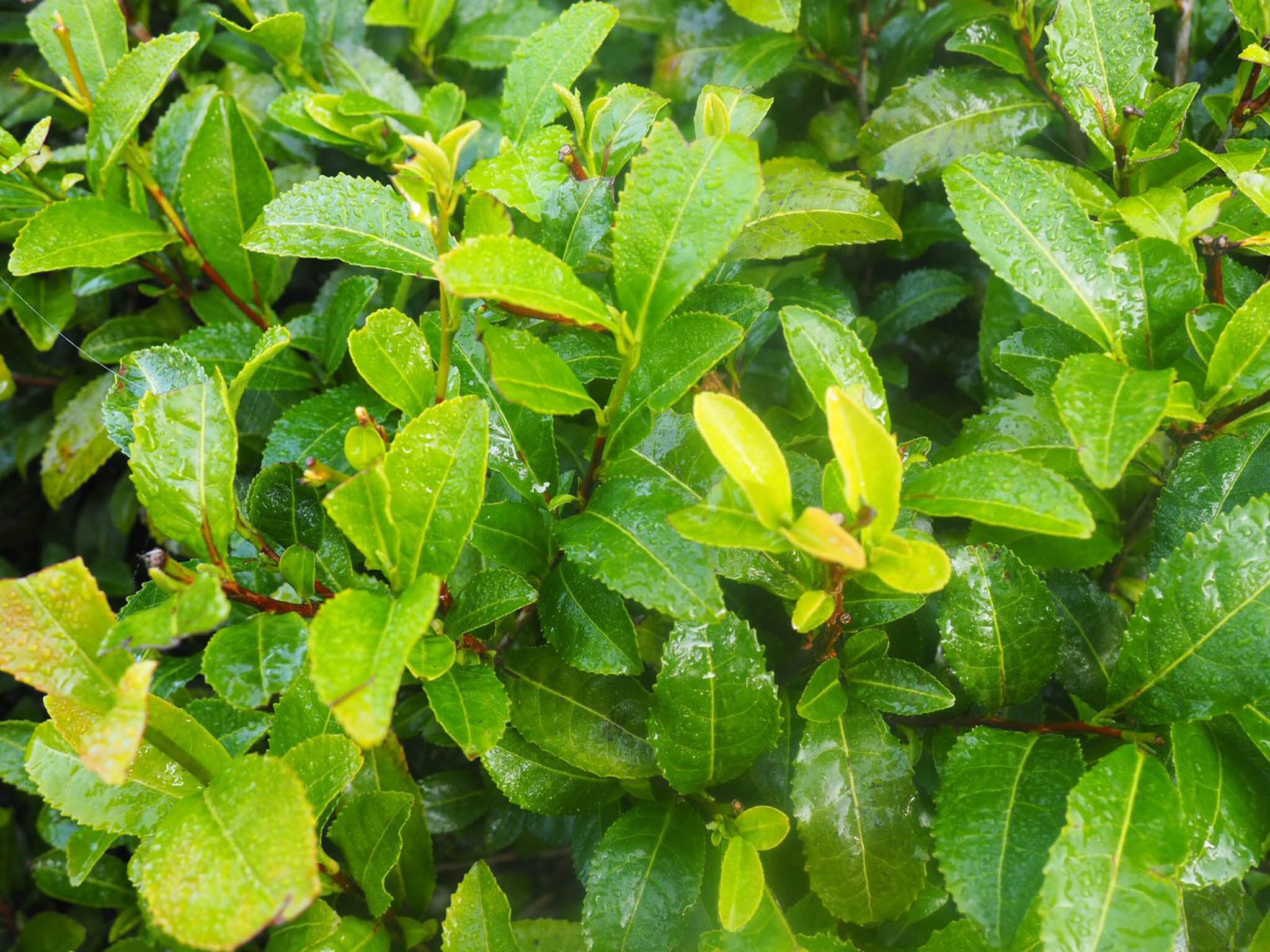
After winning a Nuffield Farming Scholarship, Jones travelled to tea plantations around the world, from Darjeeling (the Champagne of tea), which has a similar climate, to Cornwall – mild and wet. “We’re lucky here, as we rarely get a frost. The weather is temperate and damp and can vary between 4 and 5 degrees from the nearby village of Tresillian”.
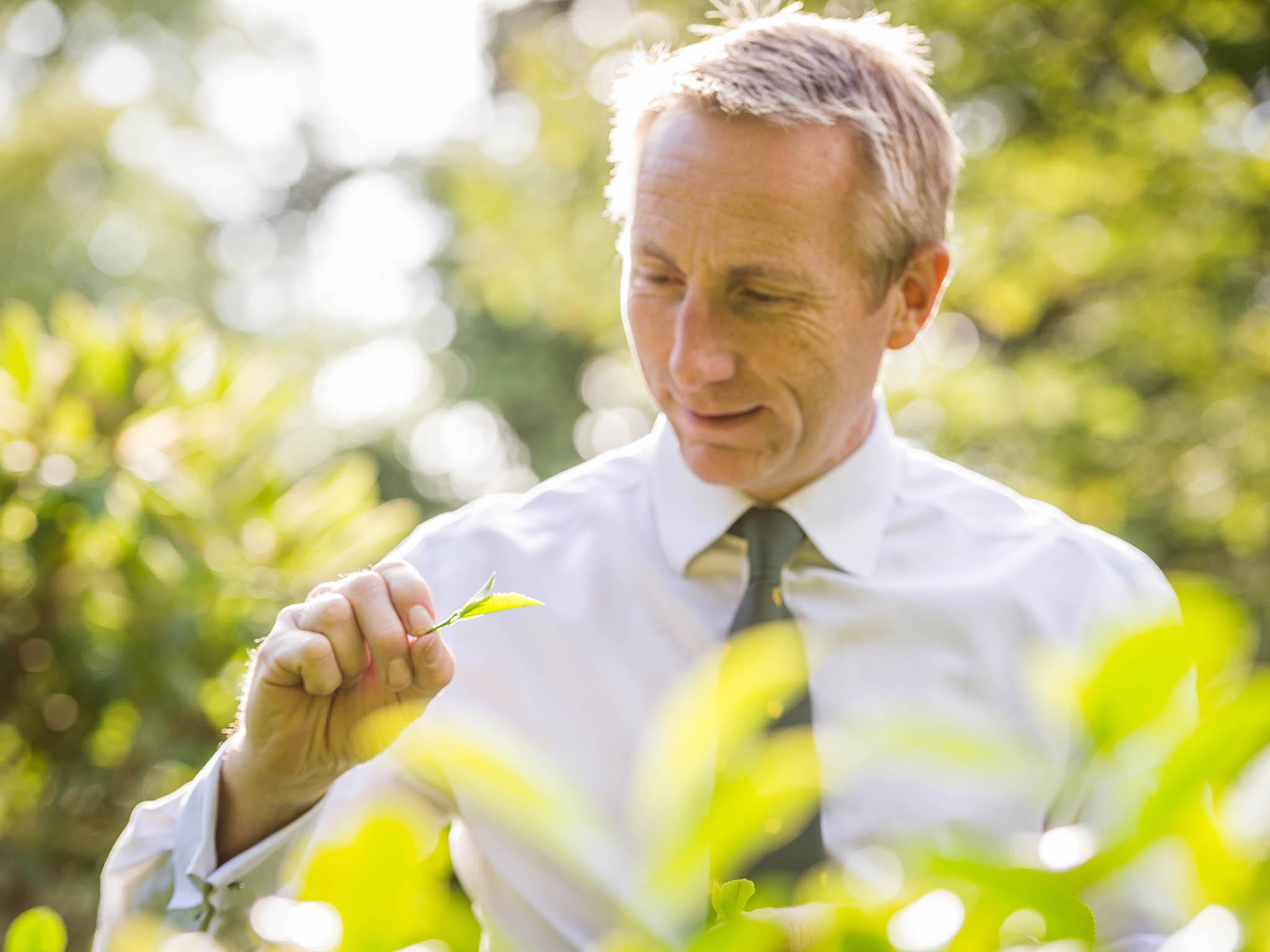
“The first crop in 2005 yielded just 28g of tea,” says Raynham. That’s just 3g short of one Tregothnan caddy of loose leaf tea. Now, around 10 tons of tea is produced a year. The original bushes were planted in the kitchen garden, between the wall and a line of manuka which acted as a windbreak. Three long rows which benefited from the shade, sun, nearby river and good draining – all key elements needed for tea-growing. “But as you can see, it really was experimental – there’s not enough room between the bushes to pick the leaves,” says Raynham. “We still don’t fully understand what we’re doing,” he adds. “The Chinese have been doing it for 5,000 years, and they’re still learning”.
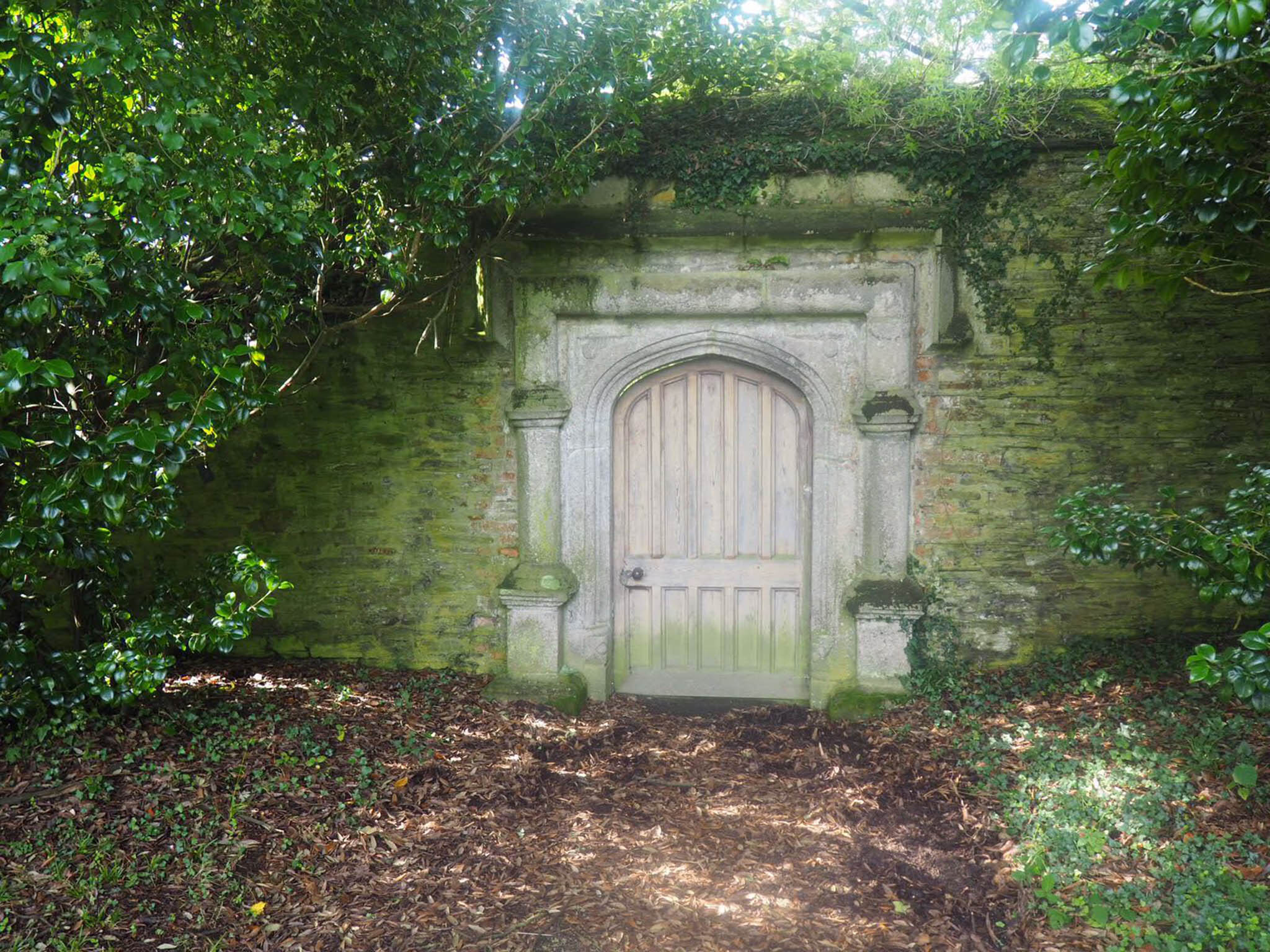
The plantation is made up of plenty of little pockets of tea dotted around the estate, from the quaintly named Pig Meadow to Barn Close and the newly planted Rectory Lawn, which lies in front of the old rectory and thankfully has more than enough space between each row. Despite being so young, Tregothnan has 14 teas including classics like afternoon and earl grey to nettle which come from the same crop and are flavoured through their drying methods. Its newest blends include collaborations, such as the “sunset polo” blend which incorporates saffron with cardamom pods made with American polo player Nic Roldan and the Cornish smoked manuka Earl Grey which was made with Raymond Blanc.
The success of the tea is expected to carry on growing, even in the face of Brexit as its biggest exports are to the US, China, Japan, Korea and Taiwan. “The continued growth of luxury tea export since the decision to leave [the EU] has been encouraging,” says Jonathan Jones. “There has been strong interest in the tea from virtually all tea-drinking countries and we are delighted to be signing up new stocklists in Europe. Just last month Boon & Blad in south Holland became our newest Continental approved stockist,” he adds.
Despite the growth, the tea is still handpicked by the team. This is done by seven full-time gardeners (among others), when the bush is seven to eight years old. That’s when it becomes a productive tea bush, says Raynham.
The top two leaves and the bud are used for loose leaf, while those lower down can be used for teabags and it’s harvested between April and September.
But the tea is essentially supporting the garden itself. It’s more of a commercial enterprise aimed at a niche market to fund the botanical gardens, which has its own peony garden, Fern tree walk, the UK’s only specimen of the Wollemia pine tree (thought to be extinct until 1994), some of the largest and oldest pink rhododendrons in the country and the world’s largest camellia maze, it’s a work of art in its own right.
Now, Tregothnan receives visitors from as far as Taiwan who have come to the UK especially to visit the tea plantation. So hopefully some of those visitors will be offering their guests the British version, instead of Chinese or Indian. I know which I’d choose, every time.
Tregothnan offers tours of the garden and tea plantations for £65pp, booked 24 hours ahead. Tickets for its annual Charity Garden Opening in the spring are £10. For more information about visiting, go to its website tregothnan.co.uk
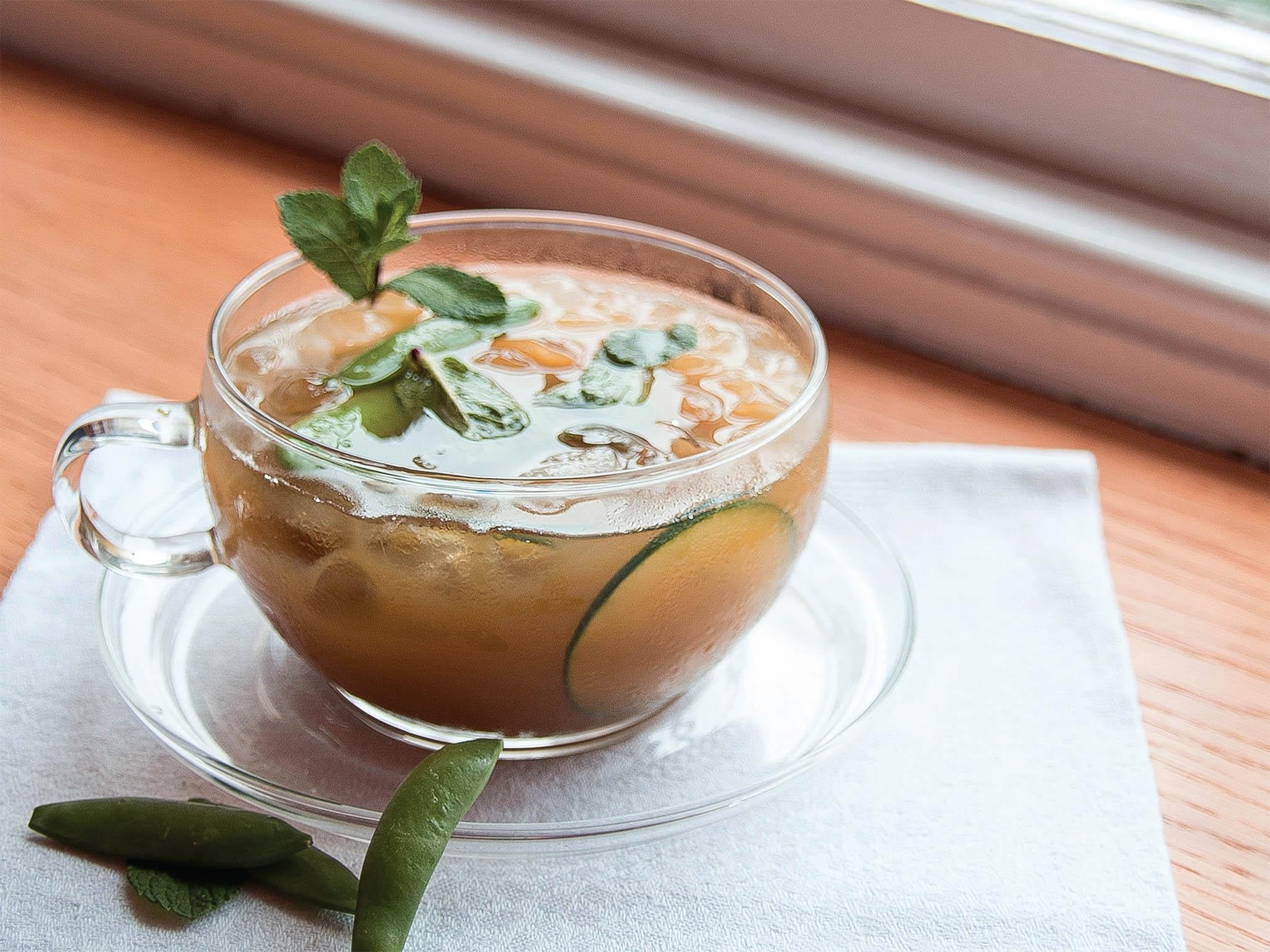
Tregothnan garden iced tea
200ml Tregothnan loose leaf peppermint infusion
1 tsp matcha (optional)
1 tsp fine sugar
Slice of cucumber
4-6 mint leaves
2 mange tout, sugar snaps or pea shoots
Slice of lime
Cold-brew your peppermint infusion for at least 12 hours. Rack off using a fine sieve and chill in an airtight container.
To assemble, place the sugar and matcha powder in a large jug or blender and pour a little peppermint over it – enough to cover the green powder and sugar. Whisk or blend until combined and the sugar has dissolved, then add the rest of your infusion.
Serve with a slice or ribbon of cucumber, some mint leaves, peas and a slice of lime. Keep chilled and use with in 2-3 days.
Serve this Tregothnan Garden Iced Tea on the rocks.
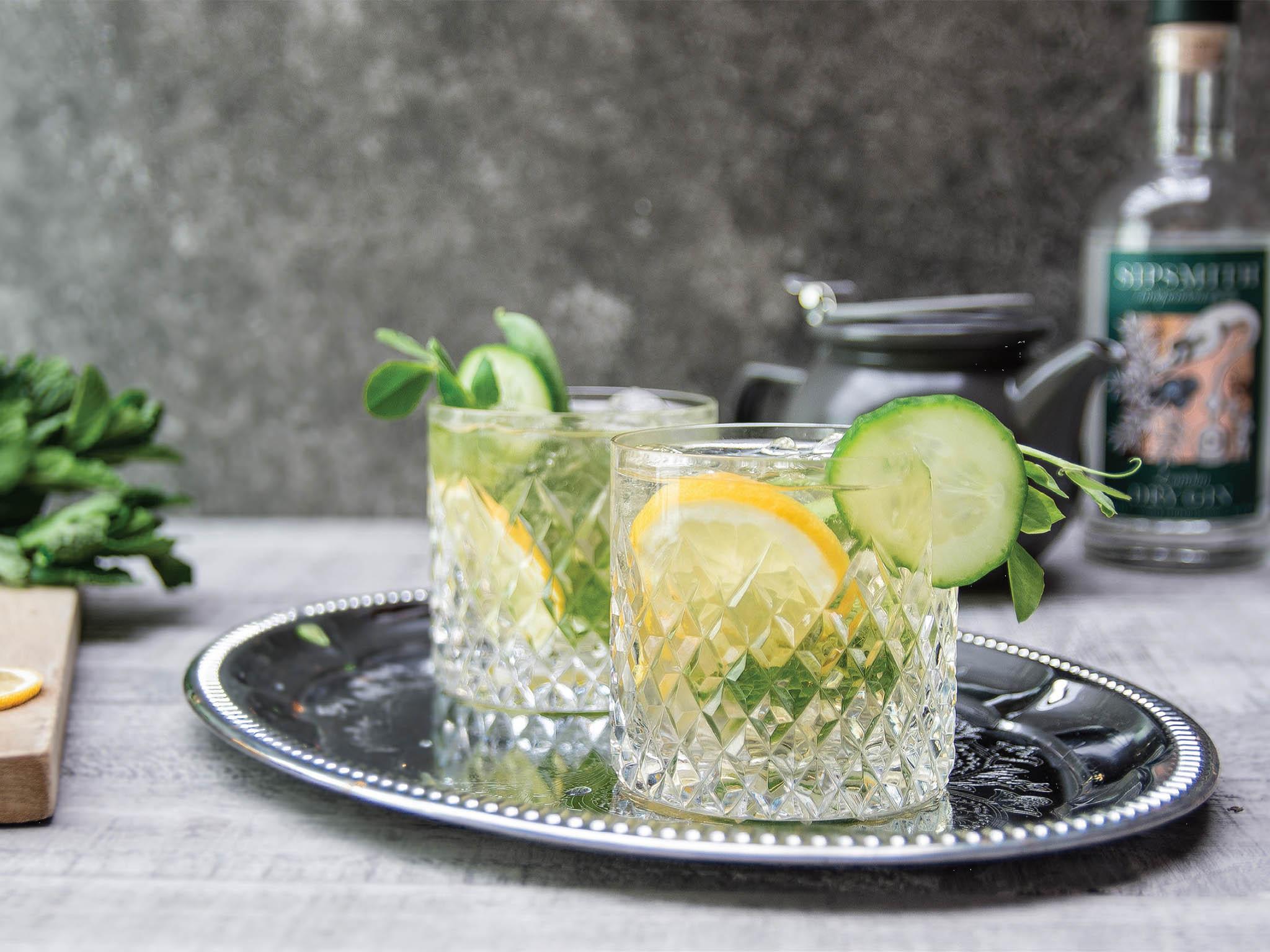
G & tea
50ml gin
25ml vermouth
100ml Tregothnan Garden Iced Tea
4 mint leaves
Elderflower ice cubes
Pea shoots (garnish)
For our Tregothnan twist on gin and tonic try to infuse your Tregothnan garden iced tea with all the fresh garnish components overnight for added flavour.
Prepare a twist of lime over the glass and bruise your mint leaves. Add the lime and the mint to the glass and cover with gin and vermouth. Then add 4-6 large ice cubes (ideally made with diluted elderflower cordial, 1:8, or frozen flowers depending on the season for a fragrant layer that will gradually add some sweetness to the cocktail).
Top with Tregothnan garden iced tea and garnish with fresh peas in the pod.
Join our commenting forum
Join thought-provoking conversations, follow other Independent readers and see their replies
Comments
Bookmark popover
Removed from bookmarks